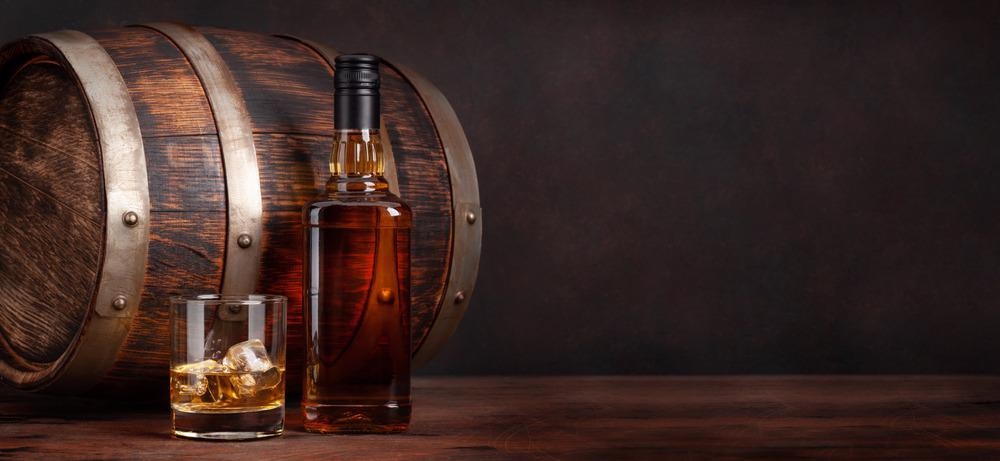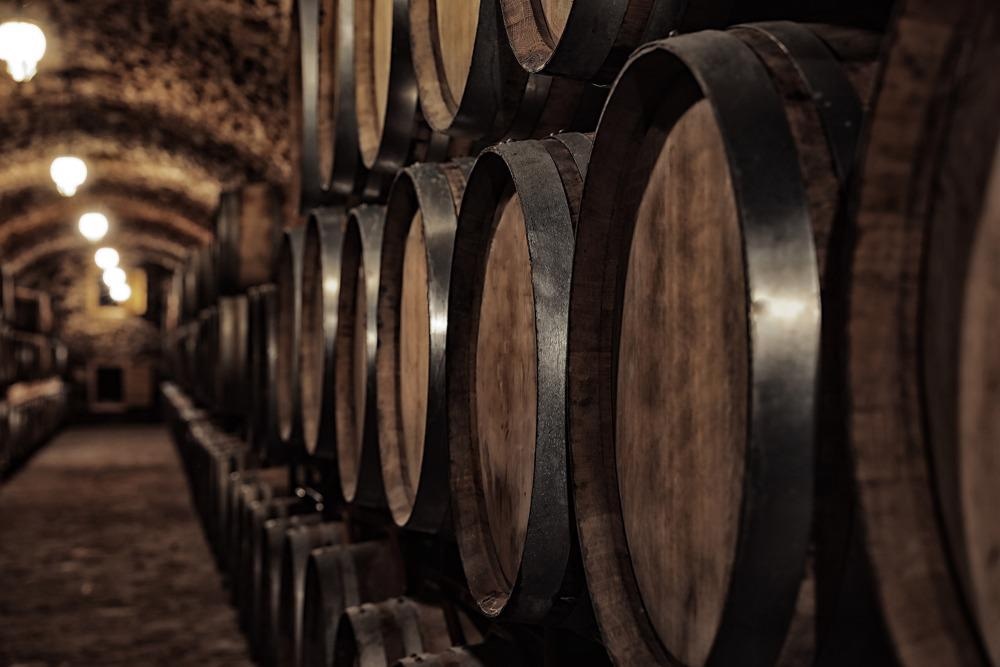Italian monasteries first introduced whiskey in its current form during the 13th century. Its initial use was for the treatment of illnesses such as smallpox and colic. Nowadays, it is a highly regulated spirit that can be produced by the fermentation of different grain varieties, including wheat, barley, corn, and rye.

Image Credit: Evgeny Karandaev/Shutterstock.com
Besides distillation, another critical stage in the production of whiskey is aging, which affects the taste of the whiskey the most. The aging process can take up a lot of time; for most whiskeys, the aging time is 2-3 years. Therefore, from a business point of view, it would be of great benefit if the aging time could be reduced to make more whiskey available to prospective customers.
Aging and its effect on the Chemical profile of whiskey
In a study by MacNamara et al., it was observed that compounds related to the oxidation of ethanol increase during the aging process. On the other hand, sulfuric compounds decrease dramatically. The number of ethyl esters and acetates has also been proven also to increase. All these changes in compound ratios can be linked with the fruity taste some whiskeys have.
In the same study, it also appeared that whiskeys that had matured for six years had a more significant concentration of compounds believed to enhance the taste of whiskeys compared to those that had matured for three years. However, it was also shown that there is a point of diminishing returns for a few compounds after the three-year mark.
The intrinsic variation of whiskey during aging
When taking a closer look at the aging process, its complexity can be appreciated. Although for most whiskeys, oak barrels are used for aging and as storage containers, there can be a lot of variation among the oak trees used. Besides the genetic variation within oak subspecies, environmental factors can lead to a further variation of the stave wood from which the oak barrels are constructed. These parameters can cause alterations to the sensory characteristics of aged whiskey.
Certain characteristics of the wood called grains (the ring patterns) influence the porosity of the wood. This, in turn, affects the quantity and the rate of oxygen diffusion through the wood during the aging of whiskey, which is critical to flavor development. Another source of variation is the charring that the oak barrels are subjected to. Charring facilitates greater interaction of the spirits with the structure of the oak. Due to the charring of the barrels, lignin compounds increase, but different charring techniques and durations produce different results because divergent compounds can be produced.
An example would be charring by toasting fire which yields combustion products while charring via natural gas flame simulates conditions in fast pyrolysis. It has to be noted that the thermal modification of barrels can impact the production of volatile compounds in ways that cannot be predicted accurately due to our lack of understanding when it comes to these processes.

Image Credit: New Africa/Shutterstock.com
Making artificial whiskey – unexpected advantages
Instead of a full barrel, the companies currently making artificial whiskey use thousands of pinky-size wood chunks called "microstaves," which are placed, along with unaged or partly aged whiskey, in a steel tank. An "activator" device forces the whiskey in and out of the wood several times a day by fluctuating the pressure and heat inside. The process offers another advantage beyond accelerating the aging process.
While a barrel is usually made entirely of the same sort of wood, there are hundreds of types of "microstaves," which differ across tree species and treatments; this allows the creation of a vast array of styles and flavors. The number of unique combinations is estimated to be in the range of billions. An additional surprising upside of finding ways to speed up whiskey aging is the positive effect it has on the environment.
With conventional whiskey aging, a considerable amount of wood has to be processed and used, along with a great amount of land and water. All resources mentioned above are significantly reduced when whiskey is aged in the lab.
The current state of artificial whiskey
When it comes solely to the taste/flavor, the general consensus of experienced tasters seems to be that artificially aged whiskey does not taste like the non- artificially aged one. However, as mentioned previously, replicating the flavor of a naturally aged whiskey is nearly impossible due to its inherent variability and our current limited understanding of the aging process.
Perhaps, in the near future, armed with a better understanding of the plethora of reactions that take place during the aging process, the production of an improved simulated whiskey could be feasible.
Sources:
- Goldfarb, A. (2018). Artificial whiskey is coming, and one company is betting you'll drink up. [online] The Verge. Available at: https://www.theverge.com/2018/8/23/17703454/wine-whiskey-synthetic-climate-change-lab-made-ava-winery-endless-west [Accessed 10 May 2022].
- Risen, C. (2021). Can a Fine Whiskey Age Overnight? The New York Times. [online] 11 Feb. Available at: https://www.nytimes.com/2021/02/11/dining/drinks/whiskey-bespoken-lost-spirits.html [Accessed 10 May 2022].
- Anon, (2020). The History of Whisky - The Whisky Guide. [online] Available at: https://thewhiskyguide.com/the-history-of-whisky/.
- Gollihue, J., Pook, V.G. and DeBolt, S. (2021). Sources of variation in bourbon whiskey barrels: a review. Journal of the Institute of Brewing. doi:10.1002/jib.660.
- MacNamara, K., van Wyk, C.J., Augustyn, O.P.H. and Rapp, A. (2017). Flavour Components of Whiskey. II Ageing Changes in the High-Volatility Fraction. South African Journal of Enology & Viticulture, [online] 22(2). doi:10.21548/22-2-2196.
Further Reading
Last Updated: May 16, 2022